The goal is clear: to develop better products and services faster. However, the path to this goal is anything but clear. Therefore, companies are constantly trying out new approaches to outpace the competition. In the meantime, it has become clear that Agile methods are an efficient solution for sustainably increasing sales and profits. Why is that?
To understand, I will take an in-depth look at 23 key Agile stats. They reveal how and why organizations are adopting Agile frameworks, the challenges they face in doing so, and the future of Agile (speaking of which, we asked artificial intelligence ChatGPT, if there will still be Agile coaches in the future – read more in our post artificial intelligence on the future of Agile).
And since pictures are known to say more than 1,000 words, I've prepared almost all Agile statistics and data into crisp numbers, charts and tables. This way you can see at a glance why Agile methods are currently spreading so rapidly. Here comes the big Agile statistics 2023 overview:
Agile Stats: Why more and more companies are turning to Agile
When Agile was launched in the early 2000s, only IT departments initially embraced the new way of working. No wonder. After all, Agile was originally developed to produce better software faster. This is different today. Other departments besides IT are also relying on Agile frameworks. What are the reasons for this? And which departments have already switched to the Agile way of working?
Agile Adoption Statistics 2023: Who is working with Agile?
The following chart on Agile Adoption Statistics (2023) shows what percentage of the following departments have adopted Agile methods:
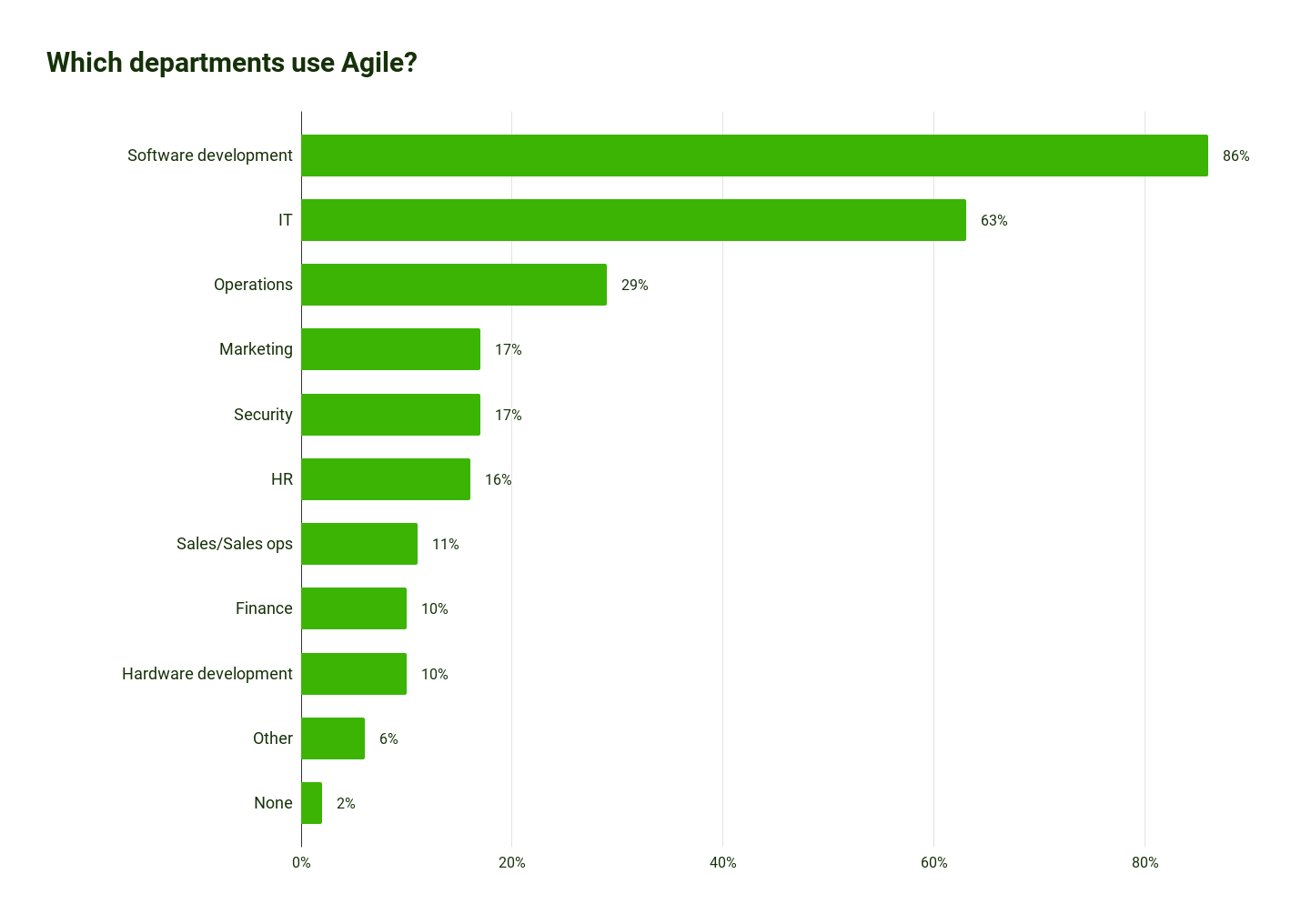
Agile Adoption Statistics: Top 7 reasons why organizations are moving to Agile
Agile Adoption Statistics not only show that more and more departments are adopting agile frameworks. They also reveal why they are choosing it:
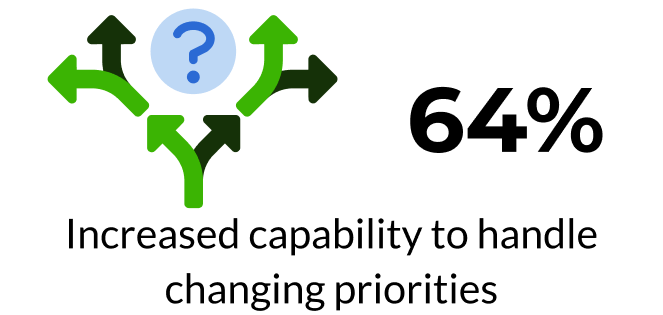

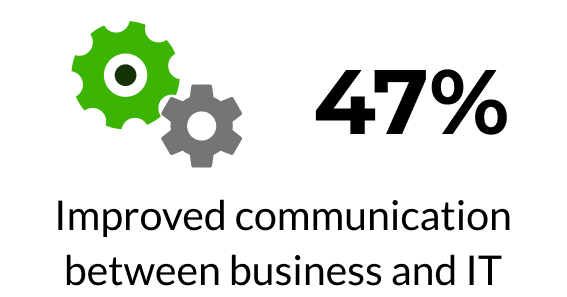
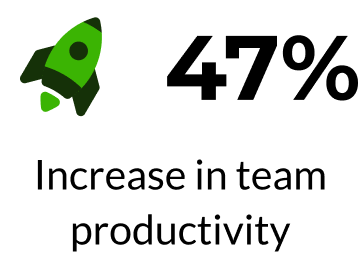
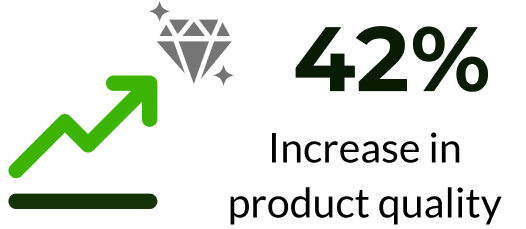


7 Agile Success Stats and Agile Statistics you should know about
With all these benefits that Agile frameworks bring to the table, the question arises: What successes can Agile claim as its own? What "benchmarks" does Agile set? I'll show you 7 more Agile adoption statistics that reveal Agile's success:
1. Only 9 percent of all Agile projects fail
This Agile adoption statistic alone is impressive enough. But it becomes even more impressive when compared to waterfall projects. Here, 29 percent fail – more than triple (Agile Statistics from the Standish Group Chaos Report).

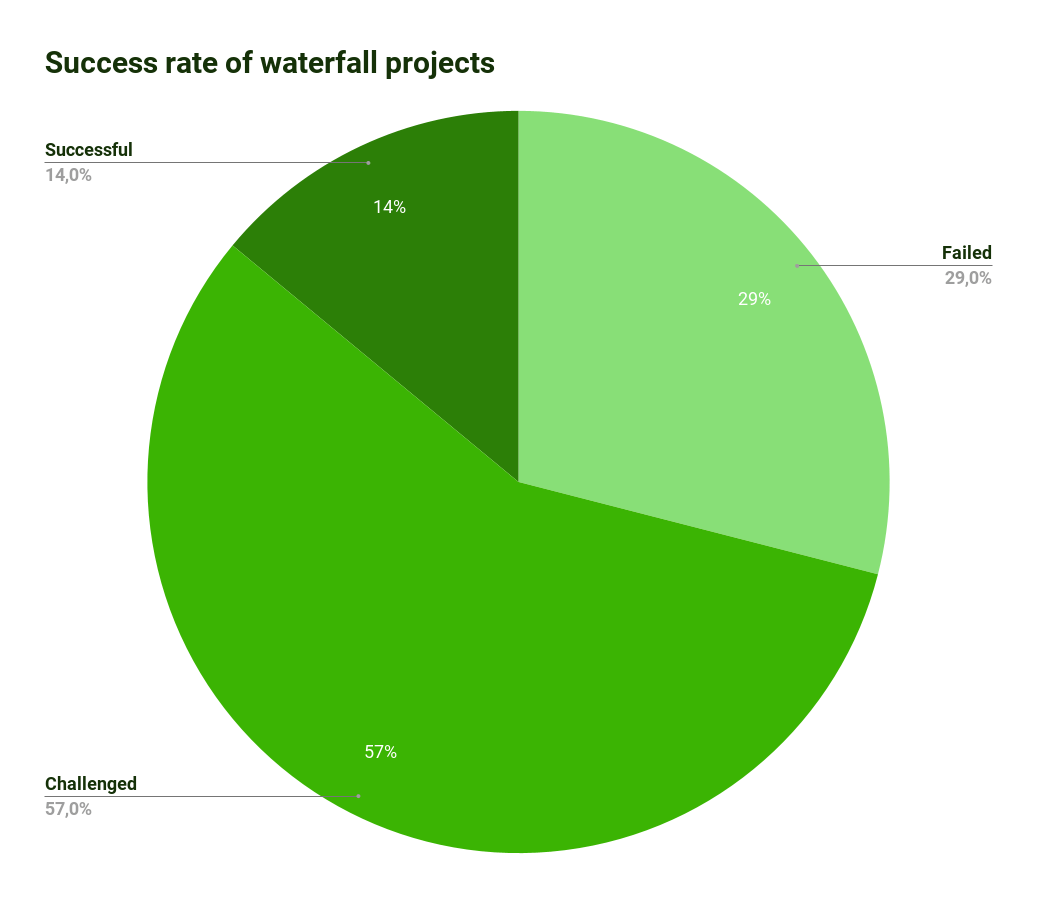
2. Full scrum increases product quality by up to 250 percent
Teams that rely on Full Scrum for product development can significantly reduce defect density. This increases product quality enormously - by up to 250 percent (Agile Statistics from the Study "The Impact of Agile. Quantified." from Broadcom Software).
3. Agile teams work 25 percent more productively
Agile adoption statistics have proven: agile teams "funcion" better. In practice, that means they work 25 percent more productively. This also has an impact on time-to-market. Teams are on the market with their product around 50 percent faster than non-agile teams. This is mainly due to the fact that Agile teams concentrate more on their current tasks (Agile statistics from a study by Delta Matrix study).
4. Agile has helped 98 percent of companies
Another exciting Agile adoption statistic (2023): Agile has helped 98 percent of all companies. It's no wonder then, that today more and more Fortune 500 companies adopt Agile in their organization (Source: What is Agile Software Development? Benefits of Agile (techliance.com).
5. 70 percent of all Agile organizations increase their time-to-market
Time-to-market determines when a company is on the market with a product – and can thus generate revenue. Therefore, the faster the better. A shorter time-to-market can therefore have a decisive influence on the success of a product (Agile statistics from the State of Agile Culture Report (2021-2022).
6. Agile business units perform better than non-Agile business units
Companies that had holistically implemented Agile frameworks or methodologies prior to the Covid pandemic performed better than non-Agile companies in customer satisfaction, employee engagement and operational performance (Agile statistics from a study done by McKinsey).
7. 60 percent of all organizations were able to increase revenue and profit after switching to Agile
An Agile adoption statistic (2023) that decision-makers look at first: 60 percent of all companies were able to increase not only factors such as productivity and time-to-market with agile methods, but also hard numbers such as revenue and profit. On average, they were able to increase their revenue and profit by 60 percent (Agile statistics from a Study by Harvard Business Review).
Agile Development Statistics: 4 developments and trends you should know about
There's no escaping the fact that Agile has gradually spread over the past 20 years. But how has it evolved in recent years? And what does the future of Agile look like? To that end, I've found 4 crucial Agile statistics:
2016 – 2019: Agile gains strong momentum
81 percent of companies started incorporating Agile into their work processes between 2016 and 2019 (Agile statistics from a study by KPMG (2019)).
2020: Agile enables efficient remote work
Agile experienced a particularly strong push at the start of the pandemic. In May 2020, for example, 43 percent of companies said their willingness to work agile had increased in the last 90 days. This is due in part to the fact that remote work became the norm for many companies during this time. Agile frameworks are enabling more efficient communication and management of teams in the process (Agile statistics from the State of Agile Report 2022).
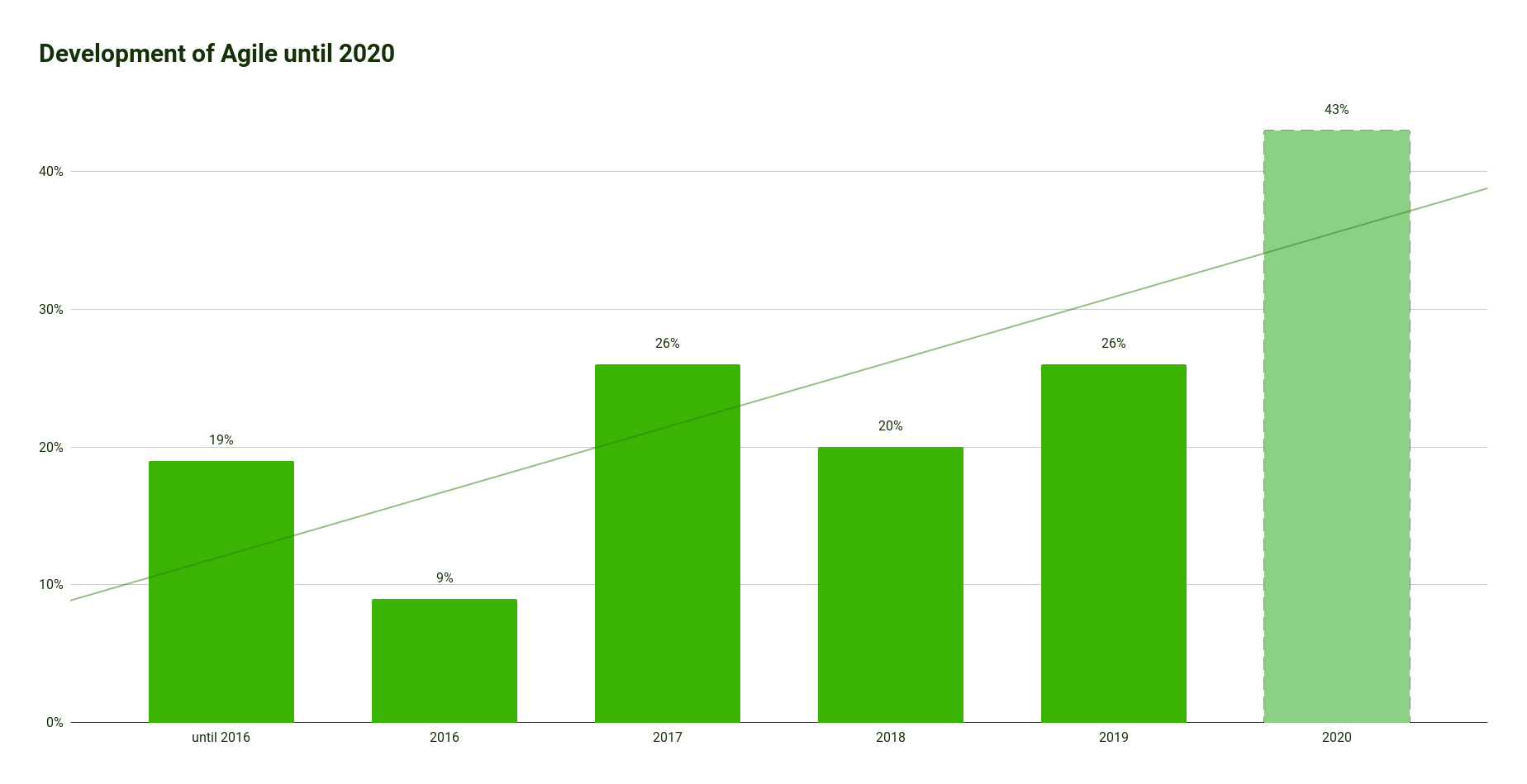
2021 – 2022: Agile increasingly spreads outside IT
Agile has become more widespread between 2021 and 2022, especially outside of IT (Agile statistics from the State of Agile Report 2022):
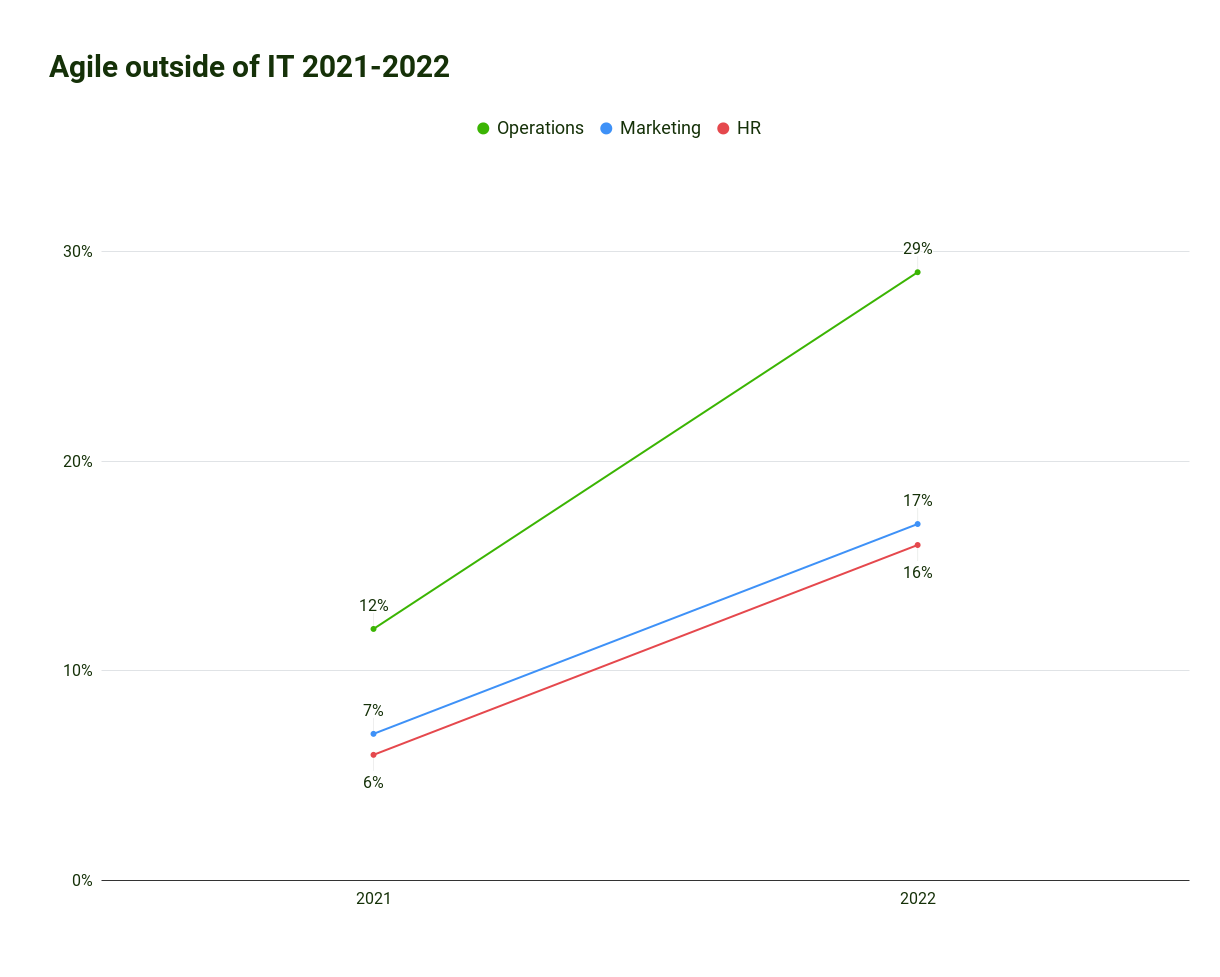
2023 – ?: Agile takes over all business units
The State of Agile Report from 2022 predicts: More and more work areas will fully switch to Agile frameworks or methods in the next decades (Agile statistics from the State of Agile Report 2022).
Agile Statistics: Why do so many Agile transformations fail?
With the evolution that Agile has brought and all the benefits that companies experience through agile methods, the question arises:
Why isn't every company agile today?
The reason is quite simple: many agile transformations fail. Jeff Sutherland, co-founder of the Scrum framework, even estimates that 47 percent of all agile transformations fail. Why do companies fail to integrate the Agile way of working into their organization?
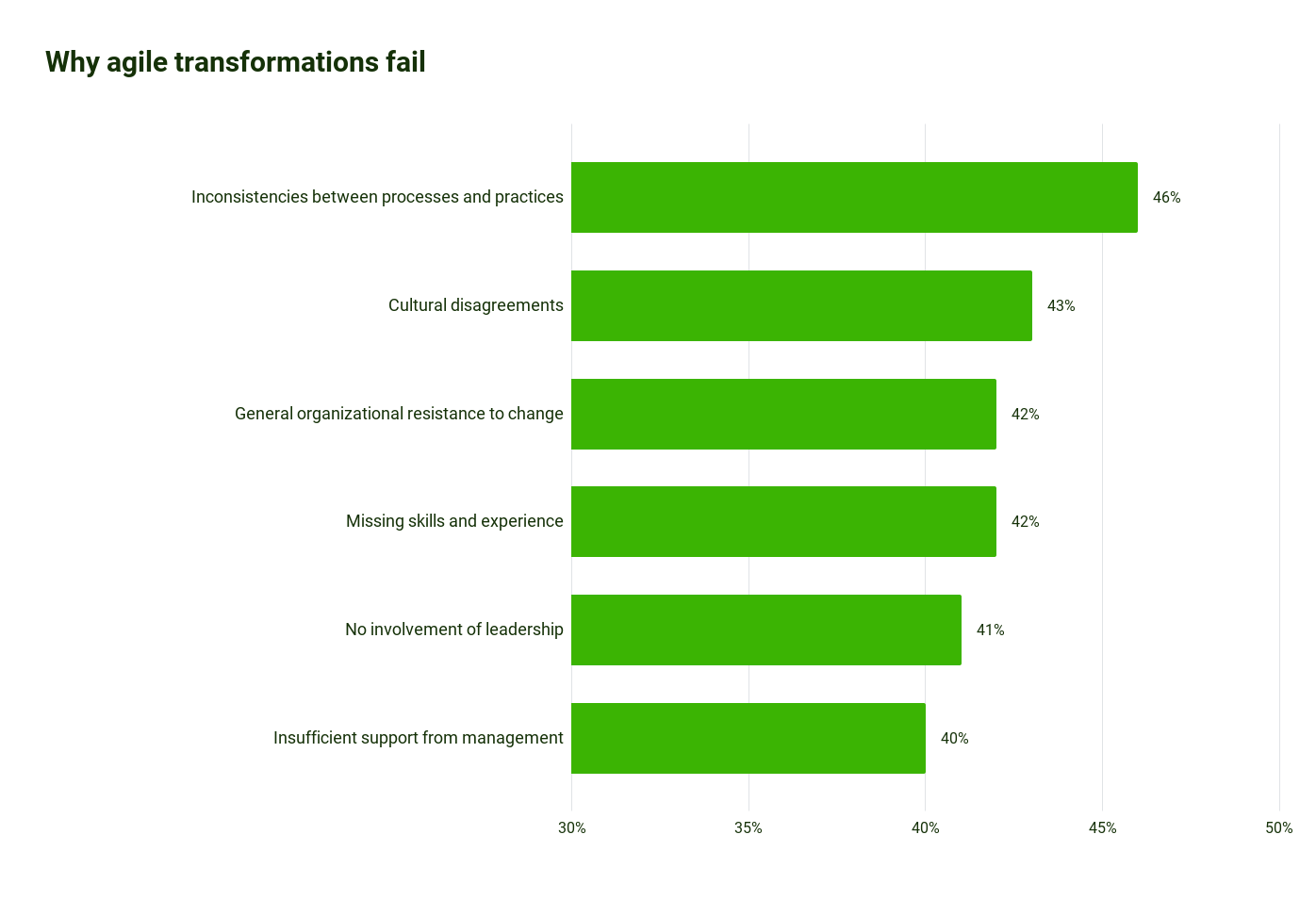
Source: State of the Agile Report 2022
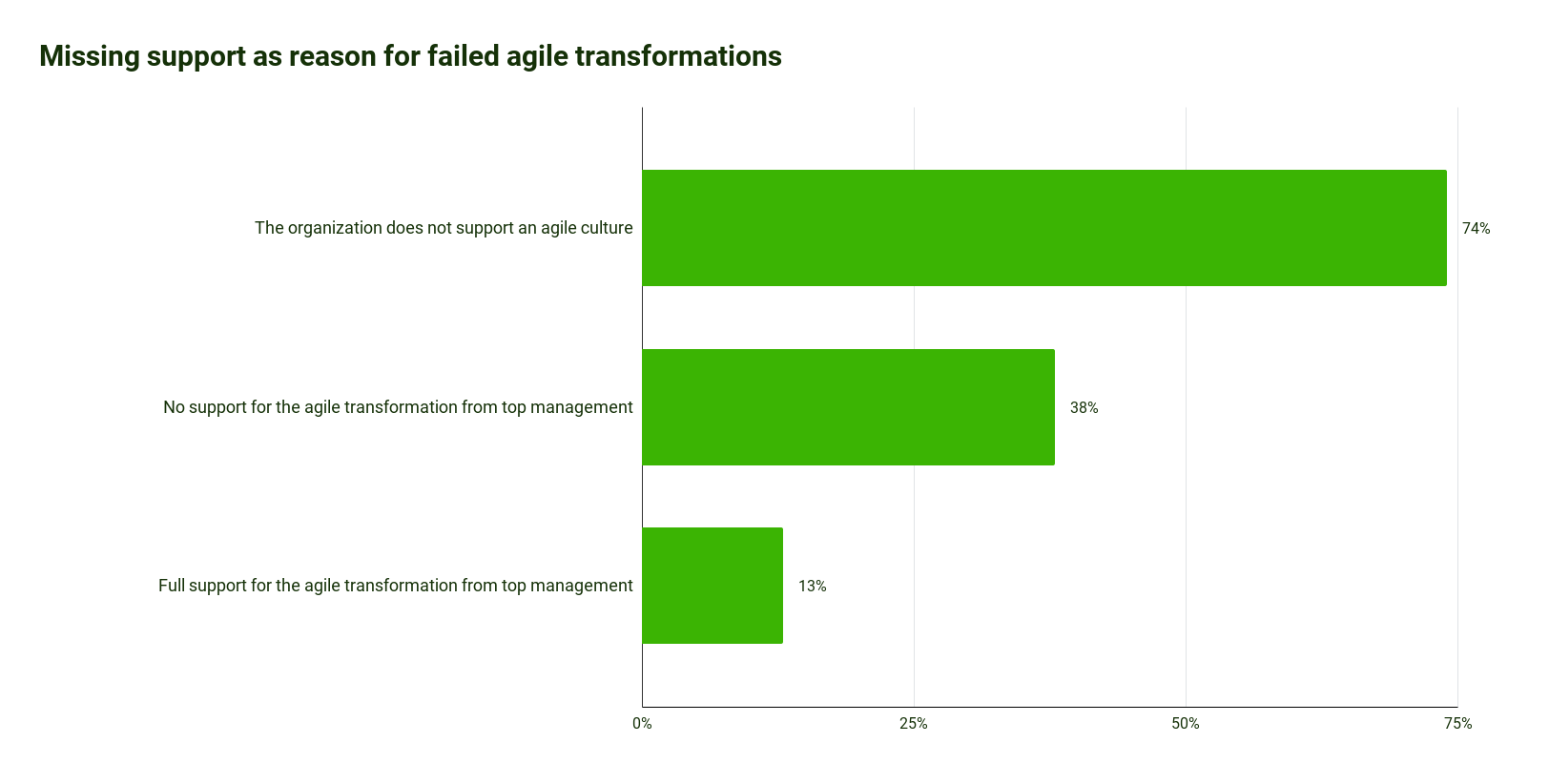
Source: KMPG's Survey on Agility
So how can organizations prevent their transition to Agile from failing? In our experience, it is important to approach Agile transformation step by step. Organizations should initially focus on the most important Agile events to familiarize employees and management with the way of working. These include, above all, retrospectives.
Agile Stats: How retrospectives help Agile transformations
Agile stats reveal that retrospectives improve the way organizations work. And retrospectives are positively received by employees. What does this look like in numbers?
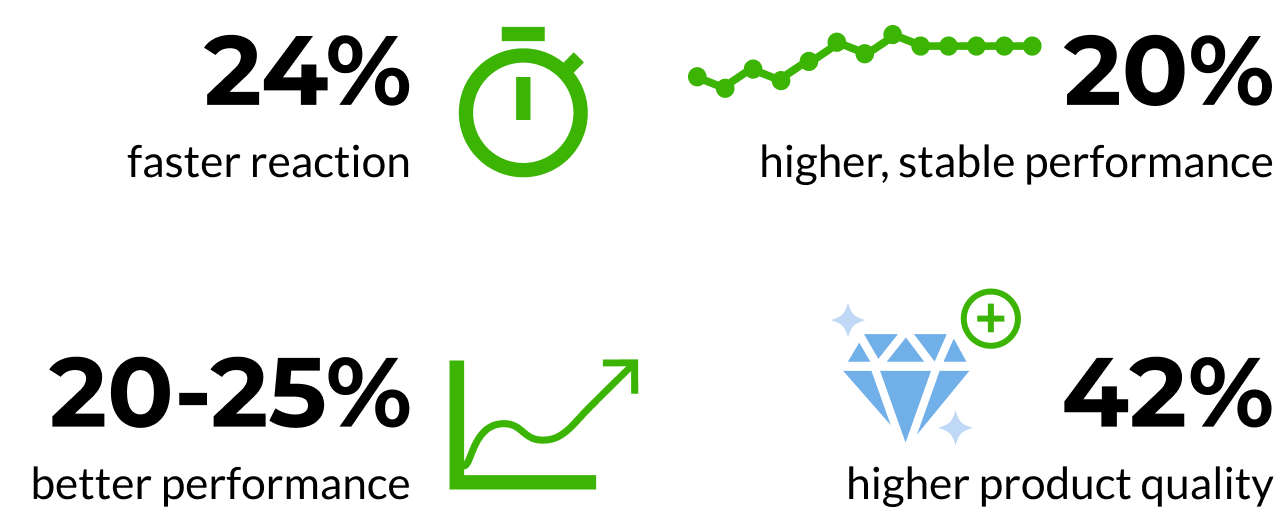
Sources: (study by Tannenbaum & Cerasoli) / (Study from Broadcom Software)
Agile Development Statistics: How do teams adopt retrospectives?
Retrospectives enjoy a high level of acceptance among employees. This is especially important. Employee acceptance of Agile events is a fundamental prerequisite for gradually embedding Agile frameworks into an organization's structures.
To find out how retrospectives are received by teams, we analyzed 30,000 retros. Basically, each retrospective asks at the end how employees rate the time they invested in the retrospective. Participants can give a response on a scale from 0 (poorly invested) to 10 (super invested). The ROTI score ("Return on Time Invested”) is the average of these responses. The average ROTI score for retrospectives is 8.33. This means that teams value retrospectives and see them as an important part of their work (time) (further results of the study of 30,000 retros).
Agile Stats: How you can measure an Agile transformation in your company
For a successful Agile transformation, it's not enough to simply implement Agile processes in the company. It is equally important to measure the impact of the changes. Only in this way can organizations determine how they are progressing with their Agile transformation. 27% of teams report in Agile adoption statistics that the lack of clearly defined metrics to measure success is hindering their Agile transformation (State of Scrum).
Conclusion on Agile Statistics 2023
To fully benefit from the advantages of Agile methods, companies must implement Agile step by step. Retrospectives are particularly suitable for this purpose at the start. They introduce teams to Agile thinking and action in a simple and understandable way.
Our Echometer tool can help you here. With it, you can conduct retrospectives that sustainably and measurably develop your organization. You can use them not only to evaluate the work you have done, but also to gradually shape the mindset and culture in your organization in an Agile way. Our eBook for retrospectives. With it, you will learn how to establish an efficient change process through retrospectives.
Most Agile Coaches and Scrum Masters run in circles...
...fixing superficial symptoms. Time to use psychology to foster sustainable mindset change.








